–

Michael Hepworth
Hollywood (Perfect Music Today) 3/19/17– If you’ve ever wondered …” what it’s like to step out on stage with a superstar? “… Then take a look at Jimmy Steinfeldts’ new book, “ Rock ’N’ Roll Lens Volume II. “ Available now from Point…Shoot…Press is this intimate collection of 50 Black And White photographs from his 30+ year career in the entertainment industry. Showcasing some great moments, with artists’ as versatile as Iggy Pop to Jerry Lee Lewis, to John Lydon, The Cars, Pine Top Perkins, Sex Pistols, Merle Haggard to Alice Cooper, Frank Sinatra, No Doubt, Devo, The Clash and more! Each photo is accompanied by a story from one of the many friends Jimmy has made along the way who shared some of their personal recollections, including Rodney Bingenheimer, Elliott Mintz, Steve Jones, Blondie Chaplin, Slim Jim Phantom & many more. The book is a fantastic collection of photos and stories. It not only represents some priceless snapshots that span several decades of popular music, ..but contains some heartfelt, candid stories, from fellow musicians and artists that are a nice compliment to Jimmy’s Work. I’ll let the photos and stories do the talking, …but I did sit down and talked to Jimmy himself, in a short interview, which you can find below that goes a little deeper into his work and his latest release, ✭✭ Rock ’N’ Roll Lens Volume II ✭✭ 30 Years of Music Photography and Stories by Jimmy Steinfeldt
Fast Tony Interview With Jimmy Steinfeldt,
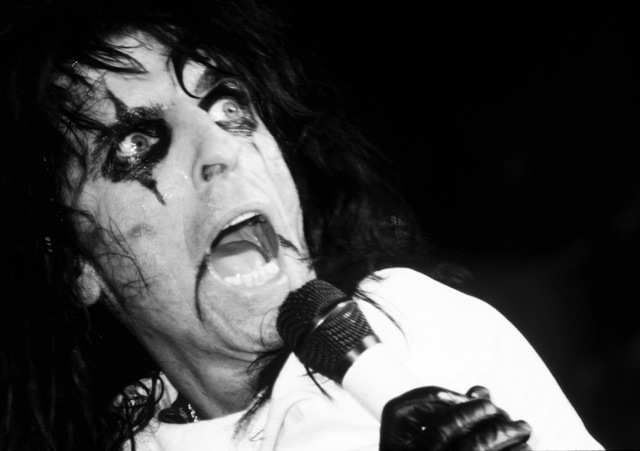
FT – What was it that caused you to initially pick up a camera and were musicians your first subject choice?
JS – I first picked up the camera because I wanted to record a trip that I was taking across the US, mostly landscapes at the time, the kind of things you’d see on a travel trip. The pictures turned out really good, so I was encouraged, …and then I took my camera to a concert & then eventually Kodak came out with a film years ago that allowed you to take photos in a low light, which was for indoors & of course a lot of concerts are indoors…so I tried that film and had no idea if it was gonna work, and it worked great!, so that really made a big difference and encouraged me to continue.
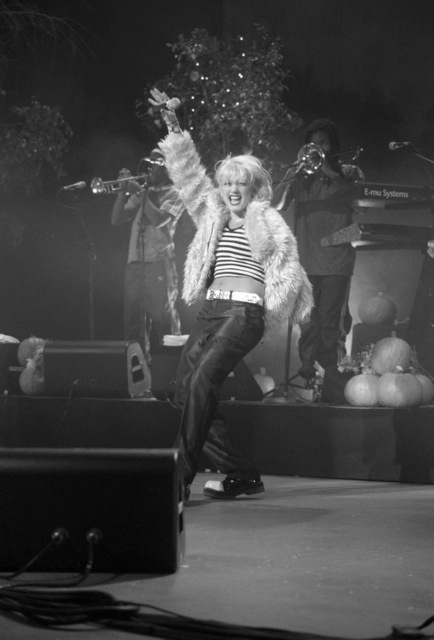
FT – What ultimately became the first commercial photograph you took? What year was it taken in? Who published it and when?
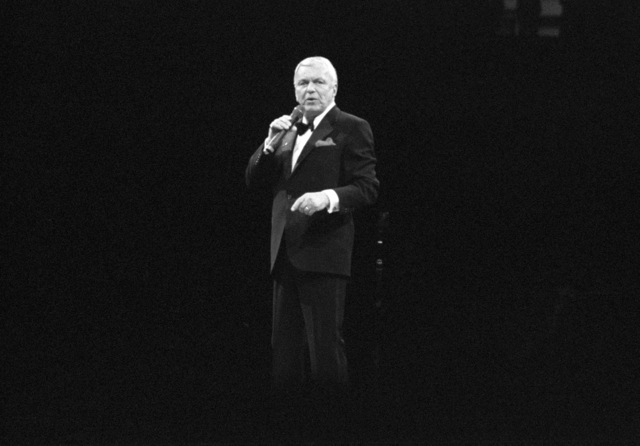
JS – The first picture of any notice that was published was my picture of George Thorogood and that was published in SPIN magazine in 1985,…and as a matter of fact I’m looking at the check that SPIN sent me, it’s framed in my office.
FT – Of all the artists you’ve photographed, is there one or two that stand out that were the most pleasant experiences as a photographer? A night you’ll never forget.
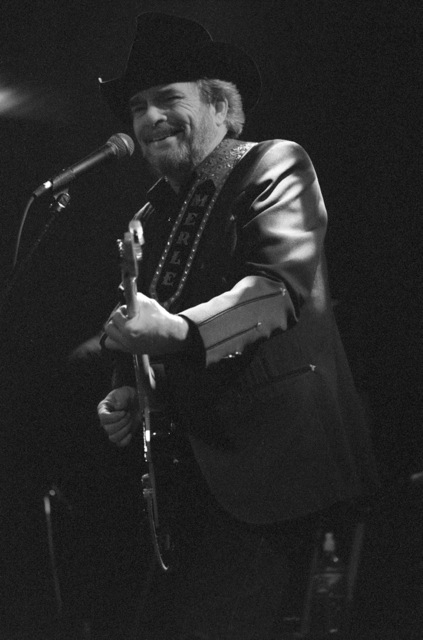
JS – There’d be many,…. some of the people I photographed that the experience stands out, would be Prince, he’s from hometown Minneapolis, and I photographed him many times…..ah, obviously one of the all time great performers though, so it was really terrific to photograph him…and certainly my photograph of Madonna’s first tour. That was exciting and that was my first picture in Rolling Stone and that meant a lot to me.
FT – What were some of the challenges you had to overcome in the beginning as a photographer? I’ve read about how you reported record labels and promoters gave you the greatest access to the artist you were interested in shooting. Once you gained that access, was it like the flood gates opened, or were there still a lot of uphill battles getting your work established?
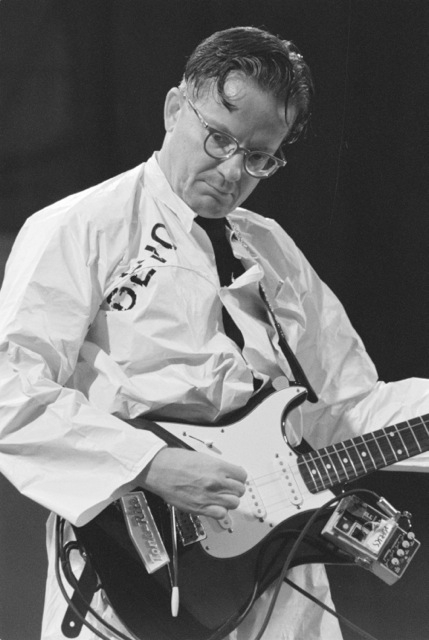
JS – I would say overall, it was not difficult. There are always some hurdles to overcome. Everything as simple as, setting up photo sessions, and going through and making sure people are there on time,…. so there’s a lot of challenges…competition, a lot of different photographers,…um, so there are a lot of challenges of being a professional photographer I suppose really in the entertainment business.
FT – What was the first concert you ever attended and where?
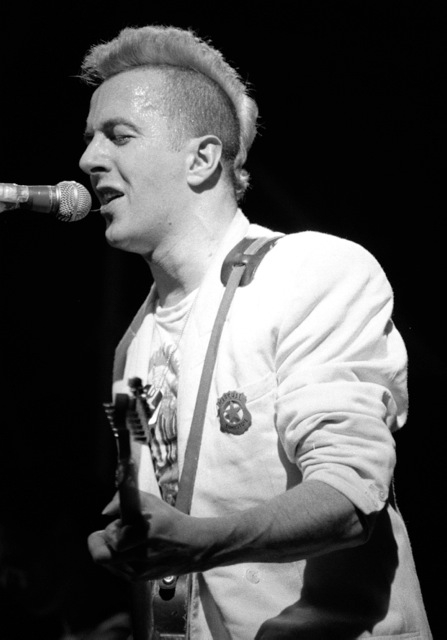
JS – First concert I ever went to was a band called America,….. and they played at the Minnesota State Fair.
FT – How was the show?
JS – It was exciting. I’d never been to a concert before and they were one of my favorite bands. Oz never did give nothing to the tin man.
FT – Is there a particular artist or band you’ve never photographed that you’d love to get the opportunity to work with?
JS – Yes! Fats Domino. I would jump on a plane tomorrow to go photograph him.
FT – Has there been a particular artist or band you’ve had the chance to photograph that you’d most like to shoot again?
JS – I suppose a few artists’ that come to mind. Certainly, The Rolling Stones, Bob Dylan, … Clapton, ..ah he’s not touring very much anymore, …I think he’s doing one tour though, but he’s been talking about retiring.
FT – Has there been an artist or band who were quite possibly the easiest to work with that stands out in memory for you, were everything was just (pun intended- clicking)?
JS – One session, that kind of makes me think about that,…um, …as I mentioned I’m from Minneapolis, and there’s a very fine songwriter from Minneapolis, named Paul Westerberg…from the band The Replacements. He went solo in 1995, and Paul came to my studio in Culver City for a session, and that was great fun, because I admire him so much….you know, we’re from the same place and basically the same age. I think his publicist or his manager dropped him off, and it was just Paul & me in my studio,.. and, I don’t know, we maybe had an hour. It went real well. This is kind of funny. At the end of the session as we were winding down, ..and I had two cameras…one had color film, and one had black n white. I said, “ Paul, we’re almost wrapped here, I just really wanna take one more photo “ He said, “ Ok “ ..and I took that photo and he said, “ Ok, we’re done. “ …and I said, “ Well actually, I meant one photo with each camera. “ …and he flipped me off…and, of course, I took that picture! The flipping off was a little bit of humor and sarcasm, but also, it was a little bit of honesty…ah…like, ah, we’re done here Jimmy. He’s just in my opinion, one of the truly great songwriters, and a great guy. Years later, I ran into him at the airport in Minneapolis…and he was sorta doing a Chuck Berry. He was walking through the airport, sorta not being noticed, but carrying his guitar case, ..right? So of course, I recognized him, and I just walked over and I said, “ Hi Paul, how are you? what a small world “ He said, “ Oh yeah Jimmy, I’m fine, I’m going to a gig “ … or wherever he was going, maybe a recording session, I think a gig…and he said, “ You still takin’ photos? “ …and of course I said, “ You still doing music? “ So we grinned and went our different ways.
FT – Has there been an artist or band or particular show that stands out in your memory, that no matter what you did, you ultimately didn’t quite get the results you’d hoped for? …and maybe, Why?
JS – You have to realize that I have photographed probably 3000 concerts ,…and I’ve shot probably a quarter of a million photographs. So..having done those thousands of shows, I know for certain that there were some shows,…not many, but some, where I really didn’t even get, even one picture that I was that happy with. I never shot a concert where I forgot to put film in the camera, (laughs) …I never shot a concert where I didn’t get any pictures, but there have been times where I’ve looked at all the pictures and said, “ man…there really isn’t one killer photo here. “ And that has happened on occasion,…and that can be attributed to any number of things. Frequently, it’s attributed to really low light….and that’s the nature of certain bands now. They present themselves in really low light.
FT – Of all the eras in live music you’ve been fortunate to document, is there a particular one that you realized was something really special; a unique happening that culturally represented the area and community you were shooting in most or more than another era?
JS – One thing comes to mind, years ago, I photographed…, and I even shot some film, … some black n white 8 mm film of a cool little concert, it was called “ Peace on The Beach “ The best known artist at that event was Slash,..and there were a number of other people who performed, and it was on Venice Beach. I think it was in reaction to the start of the war,…and it just seemed like the appropriate place, Venice Beach, California and an important time in history,..and I think sort of reaching back to the time of the 60’s, but this took place around 2002.
FT – Who would you say are the top three people who aided you in reaching your greatest potential and the place you’ve arrived as an artist yourself?
JS – That’s hard to say. First thing I think of is,..ah…. the two people who sort of influenced me overall in my photography,… first were, Richard Avedon, and then to some extent, ..a great cinematographer, Karl Freund…but there were so many photographers who have influenced me….Annie Leibovitz, who I got to meet years ago very early in my career. I was a big fan of Herb Ritz’s work….Henry Diltz.
FT – I’m glad you have a story included in your book by Rodney Bingenheimer. I’ve had the pleasure to meet and talk with Rodney in the past myself, and I think, like there are musicians’ musicians, Rodney has done so much as a catalyst helping shine a light on artists and bands in Los Angeles that other’s maybe failed to see the potential in, as early as Rodney did. I’m not quite sure he has gotten the credit and recognition he deserves, but I think many people and artists in the industry completely appreciate the positive influence he has had, giving a voice in showcasing many underdogs that went on to become superstars. Do you have a quick comment maybe anything you’d like to add in your years as a photographer in crossing paths with Rodney Bingenhemier?
JS – Yes! I admire Rodney greatly. He helped…you really can’t put into words how much he helped bands become popular,… including artist as world renown as David Bowie. I think Bowie would’ve made it,..in any event, but he had a huge break in the states here by Rodney being such an early supporter of his music. …And then you have punk rock artists in this town who were helped….and the GoGo’s and The Bangles and many others that Rodney certainly helped tremendously, local artists who got to be internationally known in good part by Rodney’s early help. I’ve had the pleasure of hanging out with him many times. He’s terrific and a big supporter of Rock N’ Roll Photographers. Just about every Rock N’ Roll photography exhibit that I’ve attended of other photographers, and even my own shows, Rodney has shown up…and he’s a big supporter in that way. He had a nightclub that people still talk about forty years ago or more. And finally, they made that movie about him, The Mayor Of The Sunset Strip,…and I’m even in that movie, in a little clip. I have a small little part. He’s a true legend in the music business.
FT – Rock n Roll Lens Vol 1, which was in full color, is a big contrast to Vol 2, which is entirely in back & white. Can you speak a little about the power of black & white photography and how it serves the artists’ you captured? Maybe the advantages or dimensions B&W reveals that color can not display?
JS – Black & White has a feeling of being forever. It has that eternal quality. It hearkens back to a lot of great music photography, so I felt…that I didn’t want to copy my first book,…I wanted to be different, even as an artists’ statement, I wanted to do something new….so one of the obvious things I could do that would be different, on Rock N Roll Lens Vol II was to feature Black & White photography, instead of color. Number two, I loved telling all my stories that happened to me in my career in volume one, but I wanted to change things up,…so that’s where the idea kind of hatched to interview people I’ve met and become friends with in the entertainment business. That was a huge challenge with this book, because you know how difficult it is to get a hold of people, and you know how once you get a hold of them by phone or email, then frequently you hear, “ Oh yeah Jimmy I’d love to do a story, but I can’t right now, call me next week “, and this just went on for months and months back and forth. So that was a big challenge, but I persevered,..there’s fifty stories and photos.
FT – Is there a venue or venues that no longer exists today you wish was still open to the public or that you were really sorry to see close?
JS – There are! The first one that comes to mind, wasn’t even opened when I moved here, but that was Madame Wong’s. I would’ve loved to have experienced that. I remember the Club Lingerie. Coconut Teaser, and the Crooked Bar downstairs…it was very interesting it had character. Now the building there is a fancy restaurant. We can’t forget, we must mention CBGB’s, which I did go to and did some photography at. Clem Burke I think mentions in my new book, Max’s Kansas City in NYC. I never went there, but I wish I had. In my own small hometown there was a small fun venue called The 400 Bar, which is where I photographed Weezer, and that was pretty special, because it was such a small venue and Weezer was pretty new. I hung out with them in the basement and all there was was was a lightbulb hanging down from the ceiling on a chain and I used that as my light source and that’s one of my favorite Weezer pictures and that venue was fun, ..and now it’s gone.
FT – Is there an artist or band you never got the chance to photograph, you wish you had been able to, before they maybe passed away or broke up?
JS – Yes, years ago I agreed to photograph Jethro Tull. Just after I agreed to it, after that, …it was a concert they were doing. Days later, I found out Roy Orbison was going to play in my hometown. Roy Orbison’s label called me and asked me to photograph it, and I said, “ I can’t, I’m photographing Jethro Tull. “ I really wanted to photograph Roy Orbison, but I had promised to do the other. I think at that time Roy was in his mid-fifties and I thought, oh well, he’ll come back, and he’ll be on tour again. …And I think within one year later, he had died. I kinda wish I had said to the Jethro Tull people, “ Hey, can I make an exception? I really want to photograph this legend from the fifties? “
FT – Is there any one thing that stands out, could be something you discovered along the way, or a decision you made, that has aided you in your success and helped to elevate your work?
JS – When I found out that this special Kodak film came out, called 1000 speed film, …remember film by the way?,… when i got back, those pictures back from that first concert I ever shot, ….with this special film, …which was Stevie Nicks by the way,.. they were so good. I was like, “ I’m sticking with this film! “ and I basically have, with a few exceptions, …shot that film for the rest of my career… until digital entered.
FT – My last question. How’s life in Laurel Canyon these days ?
JS – It’s beautiful, I hope you’ll come up and visit again. Give me a call after the 7th of April with Book Soup and we’ll hang out up here.
FT – Sounds cool. Great spot you’ve got up there Jimmy! really nice, fantastic!
Rock ‘N’ Roll Lens Volume II is now available for purchasehttp://www.jimmysteinfeldt.com/book.html
Rock ‘N’ Roll Lens Book 1
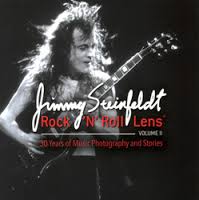
Rock’N’ Roll Lens Book 2
Michael Hepworth
287 S.Robertson Blvd, Beverly Hills, CA 90211
http://twitter.com/MrSpiritsman
http://alquimie.com.au/publicatio
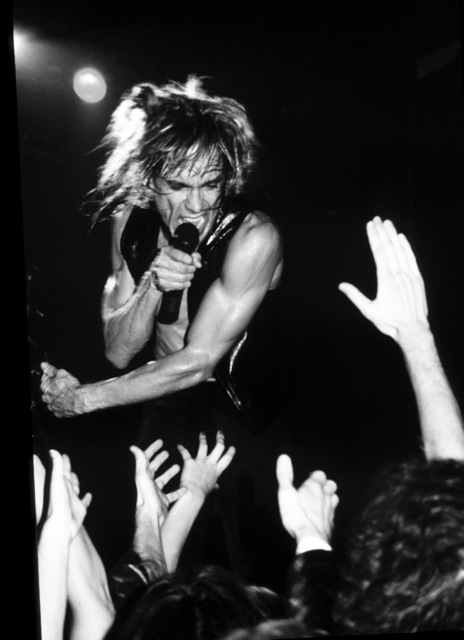
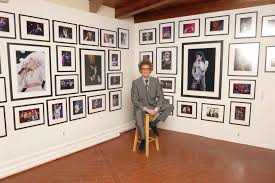
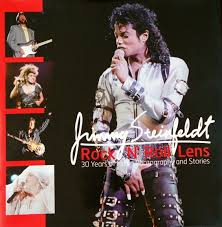

0 Replies to “Interview With Jimmy Steinfeldt, talking about his career and new book, “ Rock ’N’ Roll Lens Vol II “”